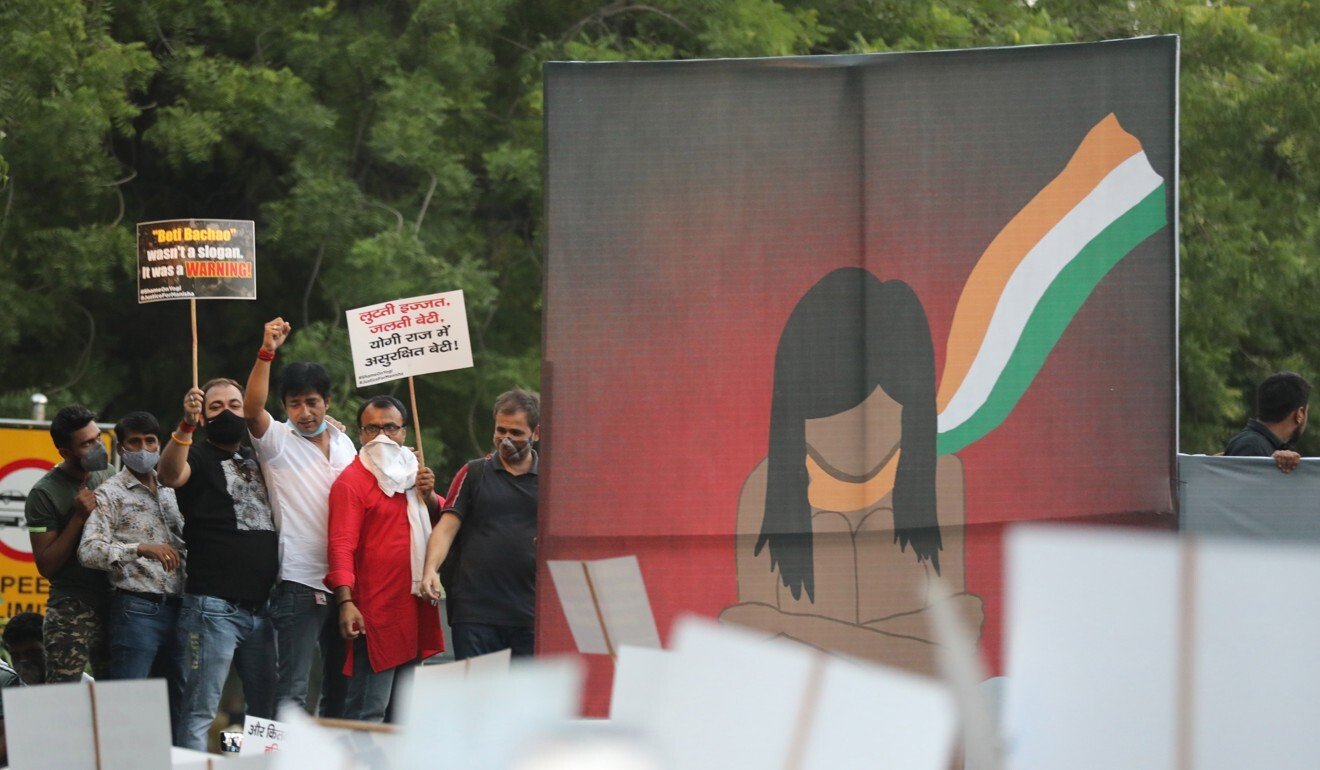
India’s Dalits rally for justice online after brutal gang rape, decrying caste-based violence
- While caste discrimination is illegal, Dalits are still treated as occupying the lowest rung in social hierarchy.
- India’s sexual violence crime rate makes it one of the world’s most dangerous places for women and lower-caste females are doubly disadvantaged
Damni Kain, 22, remembers a teacher at her convent high school in New Delhi asking students if they would go to a doctor who got into medical school through affirmative action laws seeking to walk back years of marginalisation against those of lower castes.
Kain, a member of the Dalit caste that is seen as occupying the lowest rung in Hindu social hierarchy, stayed silent. The daughter of a grocery shop owner, she was a top student who had endeavoured to “behave like the upper caste girls in the class – adopt their mannerisms and speak good English” so her schoolmates would not accuse her of being a beneficiary of affirmative action.
But reading the works of activists who had lobbied for years to do away with caste discrimination – which still plagues India despite it being banned by law – changed her mind.
Outrage in India after second Dalit woman dies from gang-rape in a week
Said the postgraduate student in political science at Delhi University: “I was getting frustrated when I couldn’t participate in anti-caste meetings or talk openly about asserting Dalit rights. But when I finally did, I realised I felt much better.”
On YouTube, Facebook and Instagram, a host of videos, stories and data on atrocities towards Dalit women and the low conviction rate of perpetrators have been shared, with hashtags such as #DalitLivesMatter, a reference to the #BlackLivesMatter movement trending on Twitter.
She died in hospital earlier this week, after which police cremated her – reportedly using petrol – in the middle of the night without her family present. Five senior officers were later suspended over their handling of the investigation but the state government has claimed sperm was not found in the samples collected from the woman and therefore she was not raped.
Who is India PM Narendra Modi and why is he so popular?
Earlier last week, two more Dalit women were reportedly raped – a 22-year-old in the village of Balrampur in Uttar Pradesh and another woman in a village in the western Indian state of Rajasthan. Another Dalit woman who was reportedly gang-raped committed suicide on Friday, in the central India state of Madhya Pradesh.
“In Indian society, upper-caste men get the licence to do anything the moment they are born,” said Kain.
“The state machinery is protecting the perpetrators of the crime which clearly gives a message that if you belong to the upper castes, you will never be penalised.”
Victims twice over
Dalit women are doubly victimised in India, suffering from crimes against lower-caste Indians and against women. Last year, more than 45,000 crimes were registered against lower caste people, an increase of 7.3 per cent of cases reported in 2018.
More, a fine arts student, said this move was aimed at sending a message to Dalits to “stay within their limits”.
The daily experiences of Dalits, and my fellow activists, continue inspiring me to devote myself to the anti-caste cause
While India’s constitution outlaws caste-based discrimination, caste continues to have an impact on matters of every day life and affects economic opportunities, especially in more rural areas.
While Dalits traditionally worked in jobs such as indentured farming, scavenging and garbage collection, education reforms after Indian independence and economic reforms that boosted private business in the 1990s led to the creation of a Dalit middle class. Dalit writer and political commentator Chandra Bhan Prasad said this was also due to affirmative action policies such as quotas for certain jobs in government for Dalits.
“[But this] attracted wrath of the upper castes,” Prasad added. “As Dalits started rising, the upper caste responded with violence and rape.”

University College London sociologist Sanjay Srivastava said as more Dalits got government jobs, bureaucrats in upper castes would sneer that they were lowering standards as they had not entered the civil service on merit.
More said at her college, some teachers “refused” to guide her.
“The Indian art fraternity is an elite upper-caste space. The moment the artists know that a lower-caste person is intruding into their secured space, they create hurdles,” she said.
Kain said she was often told that she didn’t “look” Dalit because of her fair skin. “This reflects people’s mindsets about how Dalits should look – dark skinned and impoverished,” she said.
Prasad said the BJP, which has been criticised for exacerbating India’s religious divisions through Hindu-first policies, had emboldened upper caste members who were now trying to reverse the social order.
Indian police accused of forcing cremation of gang-rape victim
But Vinay Prabhakar Sahasrabuddhe, a BJP member of parliament and key force in building Modi’s image outside India, told This Week in Asia that the recent events should not be seen as indicative of a larger problem in society. In the run up to last year’s election campaign, Modi had promised to boost social justice and ensure the safety of women.
“The efforts that have been made by Indian government for empowerment of women and marginalised sections of the society cannot be undermined and overshadowed by certain unfortunate incidents,” he said.
Srivastava said the long-standing narrative that India was a liberal democracy did not mean its system had no flaws.
“There should be more outrage exposing the wrong in the society to correct it,” said Srivastava.
Said Kain: “The daily experiences of Dalits, and my fellow activists, continue inspiring me to devote myself to the anti-caste cause.”
